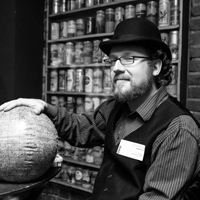If you sit in a shopping cart in your local grocery store with all your limbs inside the basket, you’re pretty much immobile. By thrashing around violently, you might get the cart to shift a few inches one way or another, but unless the floor is uneven, your thrashing will typically result in no real motion. If you really want the cart to move, you have to exert a force on the outside of it—such as the floor or the wall of the store—not the inside.
That’s a simplified version of a fundamental law of physics, known as the conservation of momentum. That law governs all sorts of phenomena, including rocket engines, collisions between electrons, and car wrecks. It’s well established by a huge number of experiments, so it’s not something you can jettison lightly. Yet, that’s what a new proposed thruster is supposed to do, and while no reputable physicists are taking it seriously, a small semi-independent lab under the NASA umbrella has given it an official stamp of approval.
The idea is fairly simple: take a sealed metal canister and fill it with radio waves, which are a low-energy form of light. By adjusting the frequency of that light until it hits a special point, supposedly the whole canister exerts a thrust without anything leaving it. That means the initial outlay of energy to start the radio waves going is all you need; the thruster itself consumes no fuel, and you get free momentum from nothing. Realistic thrusters, by contrast, spit out some hot gas, which transfers momentum to the spacecraft.
I’ll state it outright: there’s no way this thruster could work. Based on the well-established laws of physics discovered over centuries, the results of the experiments on the thruster itself performed in China and the United States, and basic scientific methodology all speak against it. Other writers, like Phil “the Bad Astronomer” Plait, are a bit kinder toward the idea, while still being clear it probably can’t work.
We expect exciting new discoveries at the fringes of scientific knowledge—low temperatures or high energies, special materials or high pressures. We don’t expect strong violations of well-established principles like the conservation of momentum.
Supposedly, the thruster exploits a loophole in physical laws involving virtual particles, but that argument falls apart with a little knowledge. Bad-movie-ish as they sound, virtual particles are a feature of quantum field theory, one of the two fundamental theories underpinning modern physics (the other being general relativity). Quantum field theory encompasses stuff like Higgs bosons, neutrinos, and other subatomic particles of the most exotic sort, and one branch is the best-tested of all theories in science.
Virtual particles aren’t real particles, which is obviously the origin of their name. Instead, they’re sort of like the turbulent ripples around the prow of a boat, while the boat is the actual real particle, such as an electron. Physicist Matt Strassler argues we shouldn’t even think of them as “particles” in the first place, which I agree with. Since they aren’t real, virtual particles are freed from a few—though not most—of the rules governing normal particles like photons or quarks.
Weird as the theory is, invoking “quantum physics” is not an escape clause from obeying physical laws. To claim that interactions between photons and virtual particles can allow violation of the conservation of momentum is sheer nonsense. It doesn’t help that the researchers invoke something they call a “quantum vacuum virtual plasma,” which isn’t actually a thing in quantum field theory or anything else but the imagination.
However, it’s also fair to ask whether the thruster works, regardless of whether the explanation is correct. Even there, the answer is no, as physicist John Baez explains in detail. The TL;DR version: the NASA researchers didn’t test the thruster in a vacuum, which means they can’t rule out the possibility of disturbances by air currents. They also found the same results when they tested their “control” apparatus, designed to give zero thrust, which means basically their experiment failed—yet they still reported it as a success. Additionally, the amount of force the researchers measured is quite small compared with the input energy, meaning it’s probably explainable using more mundane physics: no exotic quantum effects needed.
It’s telling that the same researcher developing a questionable “warp drive” is also working on this reactionless thruster. Both designs seem based more on wishful thinking than on science, and both have flaws that become obvious with a little physics knowledge. As we all know, wishful thinking accomplishes nothing; science requires careful experimental work and adherence to the laws of nature.
Real rocket science works. NASA shouldn’t involve itself, however tangentially, with dubious research of this kind.






